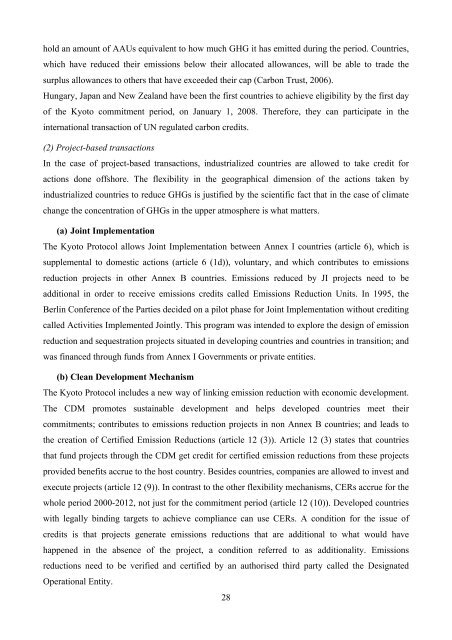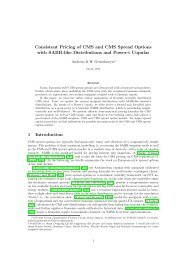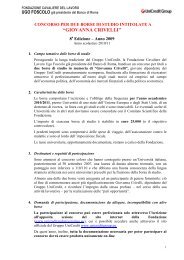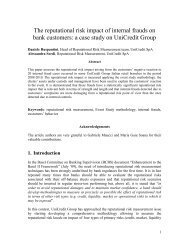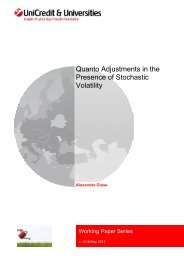Dóra Fazekas Carbon Market Implications for new EU - UniCredit ...
Dóra Fazekas Carbon Market Implications for new EU - UniCredit ...
Dóra Fazekas Carbon Market Implications for new EU - UniCredit ...
Create successful ePaper yourself
Turn your PDF publications into a flip-book with our unique Google optimized e-Paper software.
hold an amount of AAUs equivalent to how much GHG it has emitted during the period. Countries,<br />
which have reduced their emissions below their allocated allowances, will be able to trade the<br />
surplus allowances to others that have exceeded their cap (<strong>Carbon</strong> Trust, 2006).<br />
Hungary, Japan and New Zealand have been the first countries to achieve eligibility by the first day<br />
of the Kyoto commitment period, on January 1, 2008. There<strong>for</strong>e, they can participate in the<br />
international transaction of UN regulated carbon credits.<br />
(2) Project-based transactions<br />
In the case of project-based transactions, industrialized countries are allowed to take credit <strong>for</strong><br />
actions done offshore. The flexibility in the geographical dimension of the actions taken by<br />
industrialized countries to reduce GHGs is justified by the scientific fact that in the case of climate<br />
change the concentration of GHGs in the upper atmosphere is what matters.<br />
(a) Joint Implementation<br />
The Kyoto Protocol allows Joint Implementation between Annex I countries (article 6), which is<br />
supplemental to domestic actions (article 6 (1d)), voluntary, and which contributes to emissions<br />
reduction projects in other Annex B countries. Emissions reduced by JI projects need to be<br />
additional in order to receive emissions credits called Emissions Reduction Units. In 1995, the<br />
Berlin Conference of the Parties decided on a pilot phase <strong>for</strong> Joint Implementation without crediting<br />
called Activities Implemented Jointly. This program was intended to explore the design of emission<br />
reduction and sequestration projects situated in developing countries and countries in transition; and<br />
was financed through funds from Annex I Governments or private entities.<br />
(b) Clean Development Mechanism<br />
The Kyoto Protocol includes a <strong>new</strong> way of linking emission reduction with economic development.<br />
The CDM promotes sustainable development and helps developed countries meet their<br />
commitments; contributes to emissions reduction projects in non Annex B countries; and leads to<br />
the creation of Certified Emission Reductions (article 12 (3)). Article 12 (3) states that countries<br />
that fund projects through the CDM get credit <strong>for</strong> certified emission reductions from these projects<br />
provided benefits accrue to the host country. Besides countries, companies are allowed to invest and<br />
execute projects (article 12 (9)). In contrast to the other flexibility mechanisms, CERs accrue <strong>for</strong> the<br />
whole period 2000-2012, not just <strong>for</strong> the commitment period (article 12 (10)). Developed countries<br />
with legally binding targets to achieve compliance can use CERs. A condition <strong>for</strong> the issue of<br />
credits is that projects generate emissions reductions that are additional to what would have<br />
happened in the absence of the project, a condition referred to as additionality. Emissions<br />
reductions need to be verified and certified by an authorised third party called the Designated<br />
Operational Entity.<br />
28


